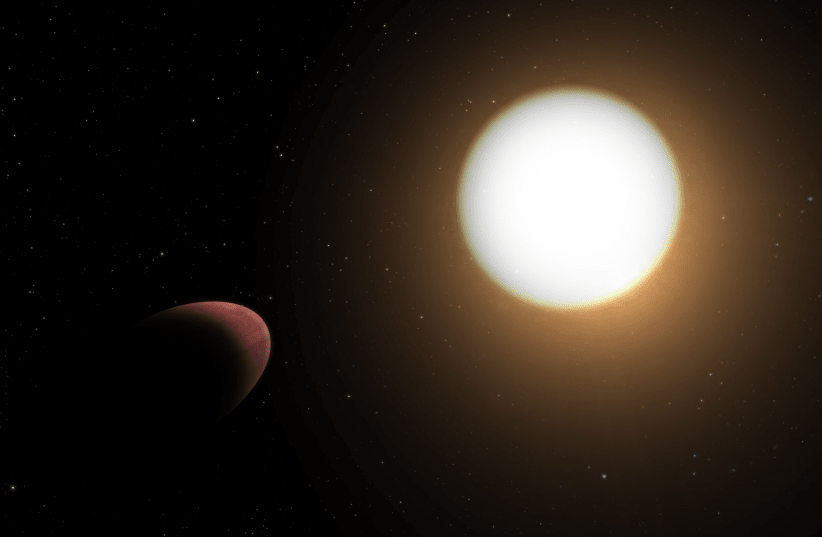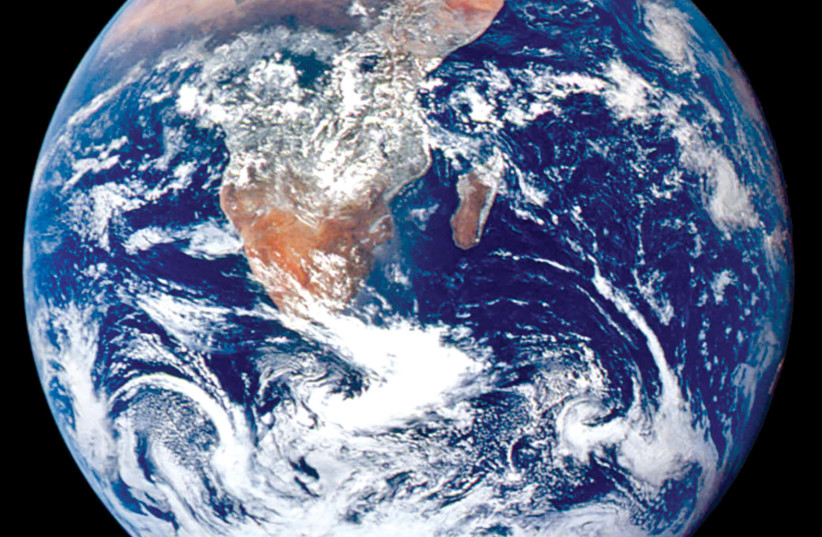A planet unlike any other was recently discovered by scientists, and rather than being round, its shape can best be compared to something ranging from an egg to a rugby football.
The exoplanet (meaning a planet existing outside the solar system) is designated WASP-103b, and is orbiting around the star WASP-103 located in the Hercules constellation. This star is around 1,800 light years away from the Earth and is much bigger, more massive, hotter and brighter than our sun.
This gas giant twice the size of Jupiter was discovered in 2014 and was finally measured by the European Space Agency's (ESA) Characterizing Exoplanet Satellite (Cheops) mission, the findings of which were published in the peer-reviewed academic journal Astronomy & Astrophysics.
But its shape is unlike anything ever seen before.
While the Earth is absolutely not flat by any means - despite what some conspiracy theorists will insist upon - it is inaccurate to call it a true sphere.
Rather, the Earth's shape is distorted a bit by its spin which makes it wider through the middle as opposed to the poles, and it is also effected by the gravity of both the Sun and the Moon.
But the distortion of WASP-103b is several orders of magnitude away from anything remotely seen before, and that is despite all the many seemingly bizarre exoplanets that have already been discovered.
Why is the planet such an odd shape?
A clue can be seen in its size and proximity to its star.
WASP-103b is larger than Jupiter but its density doesn't dwarf the largest planet in our solar system to the same extent, indicating that while WASP-103b might be larger, it is just half as dense.
The reason for this, and its shape, can both be seen by its proximity to WASP-103 - just 2 million kilometers away from a star larger, hotter and brighter than our sun.
Combine all these factors with the proximity, and, according to astronomer Phil Platt, WASP-103b is being blasted with around 10,000 times the energy that the Earth receives.
This, in turn, results in the planet being "puffed" up similar to a balloon.
But not only does this make WASP-103b bigger, it also means that tidal distortion can occur.
What does the discovery of this odd planet mean?
To put it lightly, with the planet becoming bigger and one side being so close to its star, the side away from the star has much weaker gravity. This results in both sides experiencing significantly different gravity, which lets it stretch in different directions.
We know this is the case because of brightness.
When a planet passes in front of its star, that essentially dims the star a bit as part of the light is blocked. When we on Earth see this, we, therefore, see the night-side of the planet facing away from its star. Its brightness should then be adjusted accordingly as it orbits.
The particularities of WASP-103b, however, mean the amount and rate of brightness changes for the planet and star do not match what should happen to a spherical planet.
But if the planet is shaped like a stretched-out football? That would work.
Other mysteries about the egg-shaped planet
There are other mysterious things about this planet. For instance, it is thought that, due to its incredibly fast orbit of just around 22 Earth-hours, its orbit would eventually shrink until it gets so close to its star that it is ripped apart.
But that isn't happening to WASP-103b, it seems. Rather, its orbit may actually be growing.
Why is this happening? That's still unclear, though there are theories, such as the influence of another star, but there is no evidence conclusively indicating the reason why.
But regardless, this latest bizarre and mysterious exoplanet is just another fascinating find among the many worlds populating the infinite reaches of the cosmos and shows just how much more there is to learn about the universe we inhabit.

